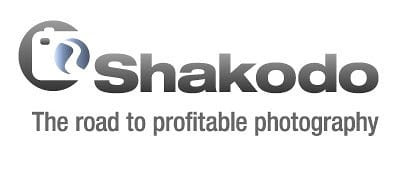A guide to the business of pricing, by Laura Tillinghast
September 25th, 2012
 Welcome to the inaugural Photographer’s Corner blog post. Each of these posts will focus on a specific topic involving the photography industry and provide you with unique insights and tips to help you and your business. Prior to our next Photographer’s Corner we will post the upcoming topic on Facebook. If you have specific questions regarding the upcoming topic* you can post them in the comments section of the Facebook post and we will select a few of them to be answered in the upcoming Photographer’s Corner.
Welcome to the inaugural Photographer’s Corner blog post. Each of these posts will focus on a specific topic involving the photography industry and provide you with unique insights and tips to help you and your business. Prior to our next Photographer’s Corner we will post the upcoming topic on Facebook. If you have specific questions regarding the upcoming topic* you can post them in the comments section of the Facebook post and we will select a few of them to be answered in the upcoming Photographer’s Corner.
Laura Tillinghast, the author of this post, is a native of Northern California and has been an artist most of her life. She discovered photography as her true passion in college and from that point on she has never put her camera down. Shooting primarily advertising and editorial content, she has found herself shooting everything from cheese to gorgeous models (though not at the same time). Whenever she shoots she keeps the same goal in mind: make it beautiful. In this blog post she shares some insights about how to competitively price yourself and your work.
You can learn more about Laura, and her photography, on her Zenfolio Pro Team page.
A guide to the business of pricing by Laura Tillinghast

One of the biggest challenges facing photographers is how to price services and products to stay competitive in a very saturated market. I sat down with Shakodo.com to pick their brains on what advice they have and find out which resources they could point me to for more info. If you are not familiar with Shakodo, it is a great blog with a wealth of information on the business of pricing your photography.
Estimates
A large area of confusion for photographers has to do with the first client contact. When someone contacts you requesting an estimate for a specific type of shoot the best way to start is to ask a lot of questions.
Let’s call these kinds of job ‘assignments’. Meaning that they have not yet been produced and will be created for a specific client. Before you can quote a price for an assignment, you need to know exactly what the client is expecting and also how they plan to use the produced images.
The needs of a client can vary from purely personal use, (for example, shooting family portraits, pets, or an event like a wedding) to full blown commercial usage (like an ad campaign.) As the photographer, it is your responsibility to determine the usage before quoting a price.
One tip I learned from a photographer I used to assist was to always keep a list of questions for prospective clients by the phone. The list covers all of the basic questions you should ask, as well as some you might not remember, when put on the spot.
I highly recommend that prior to shooting, you get everything in writing and quote exactly as written down. For my own photo business I always have an estimate signed by the client prior to the shoot date, essentially turning the estimate into a contract. When the assignment is complete I make sure the estimate/contract usage terms are listed on the invoice that is sent out. This way there will be no misunderstandings down the road. However, keep in mind that should the usage change, your quote will need to be adjusted accordingly.
There are a few services that provide software for generating estimates that make the process much easier. Personally, I have used Blink Bid and like their system a lot. Or, if you do not want to hassle with this at all and funds are no object, you can hire a production company to handle all your estimates like Wonderful Machine. This company also provides great examples of how an agency negotiates with clients on behalf of photographers:
Licensing
It is vital with any commercial applications of your images that you understand licensing. This is potentially where you can make your highest profit margins so you need to have your bases covered. In a nutshell, licensing works like this:

Little use = little value
Greater use = greater value
As an example, an image licensed for use on a professional website would cost more to license than an image used on a client’s personal Facebook profile. It’s vital to keep circulation and distribution in mind as well. If, for example, you license an image for use on a book cover the cost needs to reflect the production run. Will there be 5,000 books printed or 50,000? Will distribution be national or worldwide? All of these factors deserve careful consideration.
Also, keep in mind your base operation costs like studio space, equipment rental, etc. It is very helpful to have a clear idea of what your monthly operation costs are so you know what your overhead is for running your day-to-day operations. All of these elements need to be considered while you are determining your pricing scale.
When deciding how to price stock images, one trick I learned from a fellow photographer is to go to the Getty Images website and search for a similar image. Then use their built in pricing calculator to give an idea of what they would charge for an image with a similar subject.
Also, it is a good idea to keep a usage calendar so that you can keep track of when licenses run out. One photographer I spoke with does this and when a usage agreement is up, he sends an email to the client to see if they are actively using the images in question and want to extend the usage. This approach has resulted in a lot of additional usage checks for him so it is definitely worth a try.
The photographers association ASMP offers a lot of free information to help understand licensing.
You can also check fotoQuote for help with basic licensing prices. However, they are a paid service.
Negotiating
The art of negotiation takes time and experimentation to master. The first step is to get over your dislike for the practice. Unfortunately, negotiating a rate is a necessary element of working as a creative freelancer. So it is best to learn this skill as early on as possible.
I was given some great advice when assisting a very successful photographer during graduate school. He claimed that after you state your price, “the next person to speak loses”. He meant that once you have given the price you feel is fair, you need to wait and let your potential client respond next. If you speak up before they have done so, you are betraying your own self-confidence and coming from a weaker negotiating position. After putting this into practice over the years I have found that he is correct. When I was the person to speak first after a price was given, I found that I either ended up lowering the price or not getting the assignment at all.
Having confidence in yourself and your work is also a vital part of successful negotiating. Your potential clients are coming to you for a service or product, so having confidence in yourself will give them confidence in you as a professional who can deliver what they are specifically looking for.
Regional Considerations

When deciding how you will price your products and services, it is important to keep your geographical area and target market in mind. If you live in a small town, for example, you may not be able to charge the same rates as photographers working in a larger metropolis.
When deciding what to charge it is important to not under-cut the other photographers in your area. At the same time, you do not want to price your work out of the existing market.
When I was first starting out in the industry and I was not sure what to charge I found a few photographers in the area willing to take me on as a part time assistant. After working with them for a while I was able to ask for honest advice on what potential clients may be expecting for cost in the area. If you are not able to take this approach another way to handle it is to level with your clients and ask them what their budget is. Finding a rate that you are comfortable with that will also make your client happy is the ultimate goal. So getting an idea of what the client is hoping to spend can be a great starting point to negotiate from.
Keep in mind that if you are creative and unique and you are making compelling imagery that no one else does. Then you can dictate your prices and adjust your business model based on customer demand. To be at this level you need to not only have a great portfolio of work, you need to be on top of your marketing efforts. You can use testimonials, an amazing website, and all the social media outlets you can find to create a demand for yourself and your work.
Protecting your work
As the copyright owner of your images it is important to protect your work from un-authorized use. Whenever possible, I recommend that you embed IPTC data into your digital files. For example your copyright info, website address, and any other pertinent details you want to include for reference. Metadata can be stripped and once this has happened it is difficult to trace an image back to it’s original user but this is one easy step you can add to your workflow that may pay off in a big way down the road.
In general, for any images you have posted online for sale or license, it is a good idea to add a digital watermark or logo so that copyright ownership is clear.
Additional Resources
There are a number of resources available to you on this subject. Here are a few worth checking out:
Well-known photographer Seth Resnick offers his pricing advice for a low fee.
And of course we cannot overlook Shakodo, where you can ask a whole community of photographers for help with pricing advice pertaining to a specific scenario.
Understanding your Base Usage Rate is a good blog post to start with. It was created by an active Shakodo contributor and is definitely worth a read. Be sure to check out the comments as well.
Your main objective when pricing your work is to come up with something that feels good to you, as well as your clients. When you have decided on a rate that is comfortable to you, the right clients will feel comfortable with it as well. Try to resist the temptation to lower your rate to accommodate all budgets. Those are someone else’s clients. Many photographers, including myself, regret lowering their rate to get a job almost 100% of the time. When a situation like that comes up, remind yourself that the rate you charge reflects your talent, experience, hard work and dedication. You are worth it!
*The next Photographer’s Corner blog will be about color calibration and feature the experts from Datacolor. If you would like to submit a question for them, enter it into the comments section below. Once all questions have been collected we will post an update on our social media outlets when the color calibration post is live.



